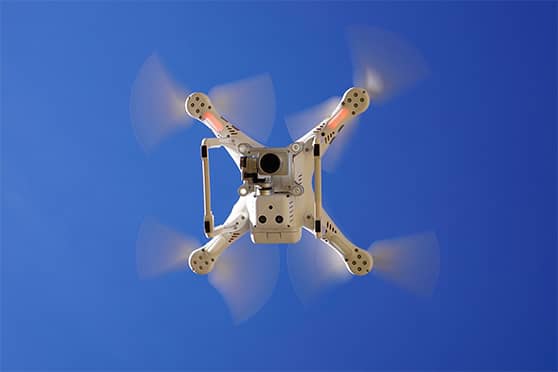Some lucky boys and girls are going to find micro-suicide drones in their stockings this Christmas. Get your orders, now!
I was idly scanning the website of the Israeli newspaper, Haaretz, as one does, and I came across a story on a new product from the Israeli defence company, Elbit Systems: a loitering, micro-suicide drone called Lanius. There was a promotional video attached and I just had to look.
It shows this palm-sized drone flying into a house, searching through the rooms one by one, finding its target (a ‘bad guy’ with a gun), and eliminating him with an explosion just big enough to kill everybody in that single room. The company’s voice-over, delivered in the urgent, hyper-masculine monotone that is standard in the genre, is a classic of its kind.
“Elbit Systems presents Lanius! Search and attack in one! New innovative, autonomous, lethal solution based on racing drones... The Lanius is equipped with ALine technology that allows navigation to building, scanning the building to identify openings, scanning and mapping, object avoidance, enemy detection and classification, target incrimination by human, and lethality. The system identifies blocked openings and can perform ad hoc lethal ambush.”
All this with noisy sound effects and dramatic music over footage of a bad guy (you can tell, because he’s wearing a ski mask) firing a machine gun out of a window while the drone patiently, almost silently, searches through the building, sneaks up behind him and blows him away.
And yes, there is ‘target incrimination by human’. The operator of the drone actually gets a video view of the target before he presses the button that kills him. So that’s all right, then.
Meanwhile, in San Francisco, two weeks ago, the city’s board of supervisors approved the deployment of remote-controlled robots in emergency situations. But the assistant police chief, David Lazar, said that they have already been using robots to deliver warrants and have no plans to give their robots guns. However, they could deploy robots equipped with explosive charges to deal with situations such as “active shooter incidents and suicide bombers.”
David Lazar, meet Elbit Systems. I think you guys could do business together. And don’t forget my finder’s commission.
Actually, if Lazar can wait a year or two, he probably won’t have to go to Israel for this technology. The Israelis commercialise ‘security’ technology faster than most countries (like the phone-hacking military-grade spyware sold to foreign users by Israel’s NSO Group), but all the major military players probably have Lanius-style drones under development.
The minor players will also have access to these systems because their ‘security’ systems are very leaky. In fact, this technology is so small, cheap and convenient that it will become almost universally available. So what are the implications of this? For the military, not all that big.
These one-person-killer suicide drones would be deployed in close-quarters, static situations like the trench warfare along the Ukrainian-Russian front line. However, there are already so many ways to kill people remotely on the battlefield, from land mines to thermobaric weapons, that one more won’t make a big difference.
But for people interested in targeted assassinations, these drones are a dream come true. These drones are so agile and so quiet that they can get close to the target without being noticed. Even if spotted, they are hard to destroy and the operator has a fair chance of escaping unharmed.
It’s the high-value political targets who are most at risk from this new technology. They are already swathed in layers of security that isolate them from the public. This will add an extra, more intrusive, layer to that protection and they will still be more exposed to danger than before.










